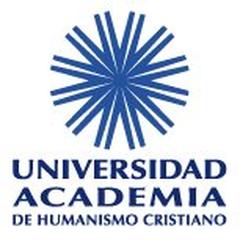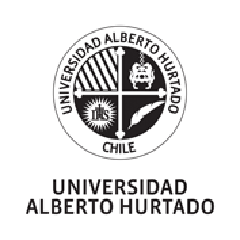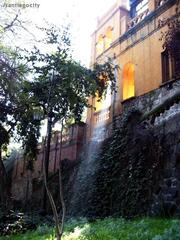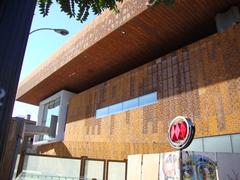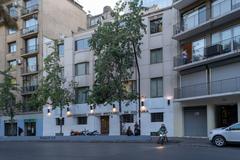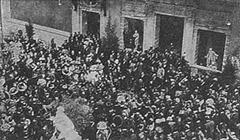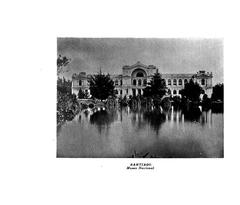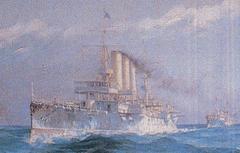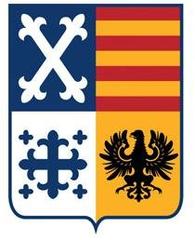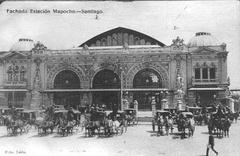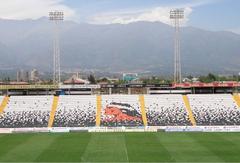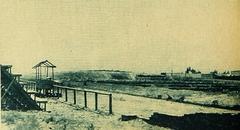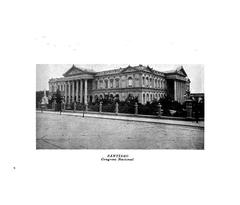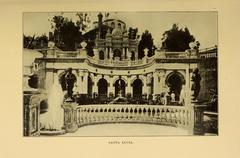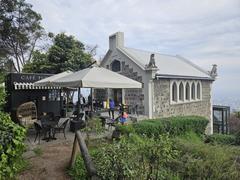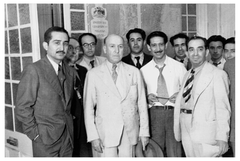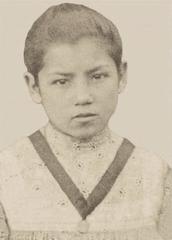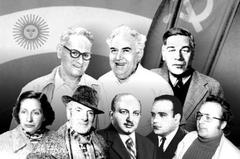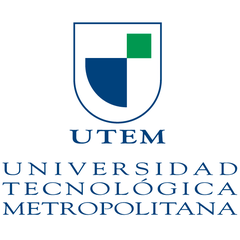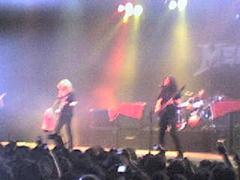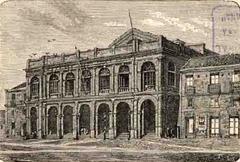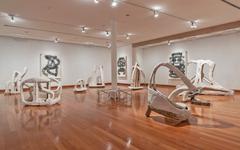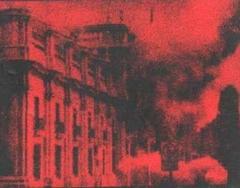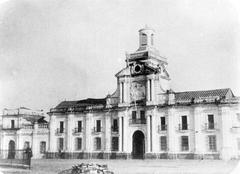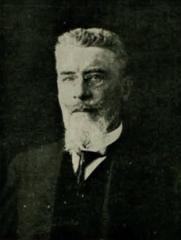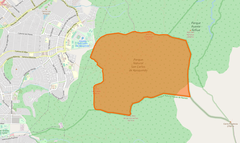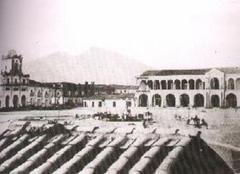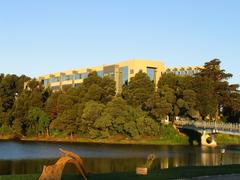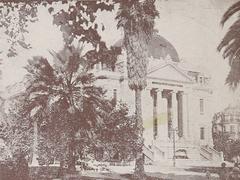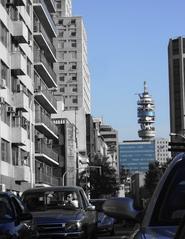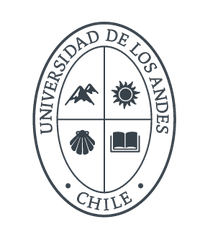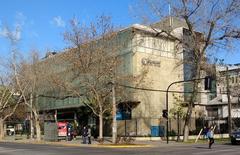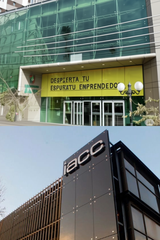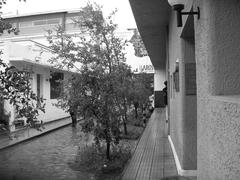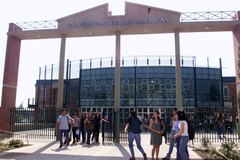
Palacio De La Real Aduana De Santiago: Visiting Hours, Tickets, and Historical Significance
Date: 04/07/2025
Introduction
The Palacio de la Real Aduana de Santiago, also known as the Royal Customs Palace, is a landmark of neoclassical architecture and a cornerstone of Santiago’s colonial and cultural heritage. Situated in the city’s historic core—steps from Plaza de Armas—this grand edifice was constructed between 1805 and 1807 to serve as Santiago’s main customs house. Today, it stands as both a symbol of the city’s transformation and a living museum, housing the acclaimed Museo Chileno de Arte Precolombino. Its robust stonework, elegant columns, and rich historical layers invite visitors to explore Chile’s journey from pre-Columbian times through the colonial era and into the present.
This detailed guide offers essential information for visitors—including opening hours, ticketing, accessibility, guided tours, and travel tips—while also illuminating the palace’s architectural splendor and multifaceted cultural significance. Whether you are an architecture enthusiast, history buff, or first-time visitor, this resource will help you fully experience one of Santiago’s most treasured sites. For further details, consult the Museo Chileno de Arte Precolombino’s website and in-depth analyses by Landmarks Architects.
Architectural Features
Neoclassical Foundations and Colonial Influences
The Palacio de la Real Aduana epitomizes neoclassical architecture in Chile, showcasing the symmetry, proportion, and restraint characteristic of this style. Its grand columns and balanced façade evoke the authority and permanence valued in late-18th- and early-19th-century Spanish colonial civic buildings (Landmarks Architects).
Structural Layout and Materials
Built using traditional masonry—thick stone and brick walls designed to endure seismic activity—the palace is organized around a central courtyard, a hallmark of Spanish colonial design. Arcaded corridors with sturdy columns encircle this courtyard, connecting the palace’s wings and ensuring natural light and ventilation.
Façade and Decorative Elements
The palace’s main entrance features a stately portico, supported by columns, and is adorned with sculpted reliefs and coats of arms. Rectangular windows, elegant moldings, and a balustraded roofline further distinguish the façade, underscoring the building’s official function (Landmarks Architects).
Adaptive Reuse and Interior Features
Originally the customs house, the palace was later adapted to accommodate the Museo Chileno de Arte Precolombino. Restoration efforts have preserved its grand staircases, vaulted ceilings, and ornamental columns, while integrating modern amenities and exhibition spaces. The central courtyard remains an inviting gathering space for visitors and cultural events.
Visitor Information
Visiting Hours and Tickets
- Hours: Tuesday to Sunday, 10:00 AM–6:00 PM. Closed Mondays and select public holidays.
- Admission: General ticket CLP 3,000 (~USD 4); discounted tickets for students, seniors, and children.
- Ticketing: Purchase at the entrance or online via the museum website.
- Accessibility: Fully accessible, with ramps, elevators, and adapted restrooms (Audiala).
Guided Tours and Special Events
Guided tours in Spanish and English, highlighting both the building’s architecture and the museum’s collections, are available by reservation or upon arrival (subject to availability). The museum regularly hosts temporary exhibitions, lectures, and cultural workshops—check the official website for upcoming events.
Best Photographic Spots
Capture the palace’s symmetrical façade from Plaza de Armas, or photograph the serene central courtyard and arcaded corridors. The grand staircases and preserved architectural details inside offer further opportunities for photography.
Travel Tips and Nearby Attractions
- Arrive early to avoid crowds and take advantage of the best lighting for photos.
- Combine your visit with nearby landmarks: Metropolitan Cathedral, Central Post Office, and Plaza de Armas.
- Nearby cafés and restaurants provide convenient options for refreshments.
Integration with Santiago’s Urban Fabric
Centrally located at Bandera 361, the Palacio de la Real Aduana is a key element of Santiago’s historic core, harmonizing with neighboring civic and religious buildings (Go Ask a Local). Its arcaded walkways and courtyards foster pedestrian engagement and reflect its longstanding civic presence.
Preservation and Restoration Efforts
The palace has benefited from extensive conservation, including structural stabilization, restoration of original decorative features, and upgrades for safety and accessibility. Modern interventions—such as improved lighting and interpretive signage—enhance visitors’ appreciation without compromising historical integrity (Landmarks Architects).
Colonial and Architectural Heritage
Commissioned by colonial authorities and designed by engineers including Don Miguel María de Atero, the palace was unique in Santiago for its two-story, dual-courtyard layout (dialnet.unirioja.es). Its robust construction and use of arcades and patios reflect both functional and social priorities of the colonial era, while its location near Plaza de Armas underscores its administrative importance.
Role in Colonial Commerce and Urban Life
Serving as Santiago’s main customs house, the Palacio regulated goods from Valparaíso and was central to the city’s economic life. Its design facilitated the inspection and storage of merchandise, while its proximity to the Plaza de Armas made it a hub of daily activity and a focal point for merchants and officials (dialnet.unirioja.es).
Archaeological and Historical Layers
Archaeological research at the site has revealed occupation dating back to the Inca period, including evidence of an administrative center and colonial domestic life. This deep historical layering underpins the palace’s status as a Monumento Histórico since 1979 and provides a rare window into Santiago’s evolving urban fabric (dialnet.unirioja.es).
Transformation into a Cultural Institution
Since 1981, the palace has housed the Museo Chileno de Arte Precolombino. The museum’s collections span thousands of years, with artifacts from across the Americas—particularly Chilean and Andean cultures (Museo Chileno de Arte Precolombino). The building’s adaptive reuse demonstrates a commitment to both preservation and cultural vitality.
Symbol of National Identity and Memory
The Palacio de la Real Aduana is a living symbol of Chilean identity, embodying the convergence of indigenous, colonial, and republican histories. Its continued preservation and use as a museum ensure it remains a focal point for education, research, and public engagement (dialnet.unirioja.es).
Community Engagement and Urban Revitalization
The palace’s restoration has contributed to the revitalization of Santiago’s historic center, attracting residents and tourists alike. Museum programming—including educational activities and cultural events—strengthens community engagement and connects visitors to the city’s layered past (Museo Chileno de Arte Precolombino).
Preservation and Challenges
Maintaining the palace as a vibrant cultural site requires ongoing conservation, especially given its age and seismic risk. The museum’s 2010 expansion—including a new subterranean level—was carefully managed to protect both its archaeological and architectural integrity (dialnet.unirioja.es).
Educational and Research Value
The palace is an invaluable resource for scholars and the public, supporting exhibitions and research into Chilean history, archaeology, and architecture. Ongoing archaeological work continues to enrich understanding of Santiago’s development and cultural exchanges (dialnet.unirioja.es).
Palacio de la Real Aduana Visiting Hours, Tickets, and Santiago Historical Sites Guide
Location and Accessibility
- Address: Bandera 361, Santiago, Chile (Museo Chileno de Arte Precolombino)
- GPS: -33.43891, -70.65218 (Aroundus.com)
- Transport: Near Plaza de Armas metro station; public transport recommended
- Accessibility: Ramps, elevators, and accessible restrooms available (Audiala)
Visiting Hours
- Open: Tuesday–Sunday, 10:00 AM–6:00 PM
- Closed: Mondays and some public holidays
- Check for updates: Official website
Tickets and Admission
- Adults: CLP 3,000 (~USD 4)
- Students, seniors, children: CLP 1,000 (~USD 1.30)
- Buy tickets: At the entrance or online
- Discounts: For eligible groups (Audiala)
Guided Tours and Special Events
- Guided tours: In multiple languages, book ahead or on arrival
- Events: Special exhibitions, lectures, workshops—see official website
Museum Layout and Photography
- Architecture: Neoclassical with central courtyard, arcaded corridors, and grand staircases (Aroundus.com)
- Photography: Non-flash allowed in most areas; restrictions in some galleries (Audiala)
Exhibitions and Collections
- Andean textiles
- Mesoamerican ceramics
- Mapuche silverwork
- Amazonian artifacts
- Interactive displays for all ages
Practical Visitor Tips
- Language: Spanish and English signage; basic Spanish helpful, especially for tours (Lonely Planet)
- Facilities: Gift shop, café, accessible restrooms, and lockers
- Safety: The area is generally safe, but stay alert with valuables
- Events: Public demonstrations may occur near government buildings—check local news if needed (Lonely Planet)
Nearby Attractions
- Plaza de Armas: Santiago’s main square
- Santiago Metropolitan Cathedral
- Chilean National History Museum (Wikipedia)
- Central Market
Cultural Etiquette and Local Customs
- Greetings: Single cheek kiss (women/men and women); handshake (men) (Lonely Planet)
- Dress code: Smart-casual recommended
- Tipping: 10% in restaurants/cafés is common
Accessibility for Families and Groups
- Family-friendly: Interactive exhibits for children, strollers allowed, baby-changing facilities available
- Groups: Special rates and guided tours for school or large groups
Sustainability and Responsible Tourism
- Respect the site: Do not touch artifacts; dispose of waste properly
- Heritage preservation: The museum promotes sustainable tourism practices
Frequently Asked Questions (FAQs)
- Are lockers available? Yes.
- Is the museum air-conditioned? Yes.
- Can I buy tickets online? Yes (Audiala).
- Are guided tours available? Yes, in multiple languages.
- COVID-19 restrictions? Check the official website for updates.
Final Tips for a Memorable Visit
- Arrive early for a quieter experience and better photos.
- Allocate extra time for the palace’s architecture and exhibitions.
- Extend your exploration to other nearby historical sites.
Stay informed by checking the museum’s official website and using reputable travel resources like Audiala.
Visual Aids
- Photos of the neoclassical façade and central courtyard (alt text: “Neoclassical façade of Palacio de la Real Aduana in Santiago”)
- Images of key exhibits (e.g., “Ancient Andean textile at Museo Chileno de Arte Precolombino”)
- Map showing palace location relative to Plaza de Armas
- Virtual tour links (if available on the official site)
Internal Links
- Articles on Santiago’s Plaza de Armas
- National History Museum official page
- Features on other historical landmarks and museums in Santiago
Summary and Travel Tips
The Palacio de la Real Aduana de Santiago is a compelling destination for anyone interested in Chile’s rich history and architectural heritage. Its adaptive reuse as the Museo Chileno de Arte Precolombino ensures that visitors engage with both its historic structure and diverse collections. Centrally located and accessible, it offers educational programs, guided tours, and a welcoming environment for families and groups. Plan ahead by checking the latest visiting hours and ticket options on the official museum website, and enhance your experience by exploring nearby attractions. For deeper context, see Landmarks Architects and Dialnet’s archaeological report.
References
- Landmarks Architects - Famous Architecture in Chile
- Go Ask a Local - Travel Guide to Santiago, Chile
- Dialnet - Archaeological Report on Palacio de la Real Aduana
- Museo Chileno de Arte Precolombino - Official Website
- Audiala - Chilean Museum of Pre-Columbian Art
- Aroundus.com - Palacio de la Real Aduana de Santiago Location
- Lonely Planet - Things to Know Before Traveling to Chile
- Wikipedia - Palacio de la Real Audiencia de Santiago





